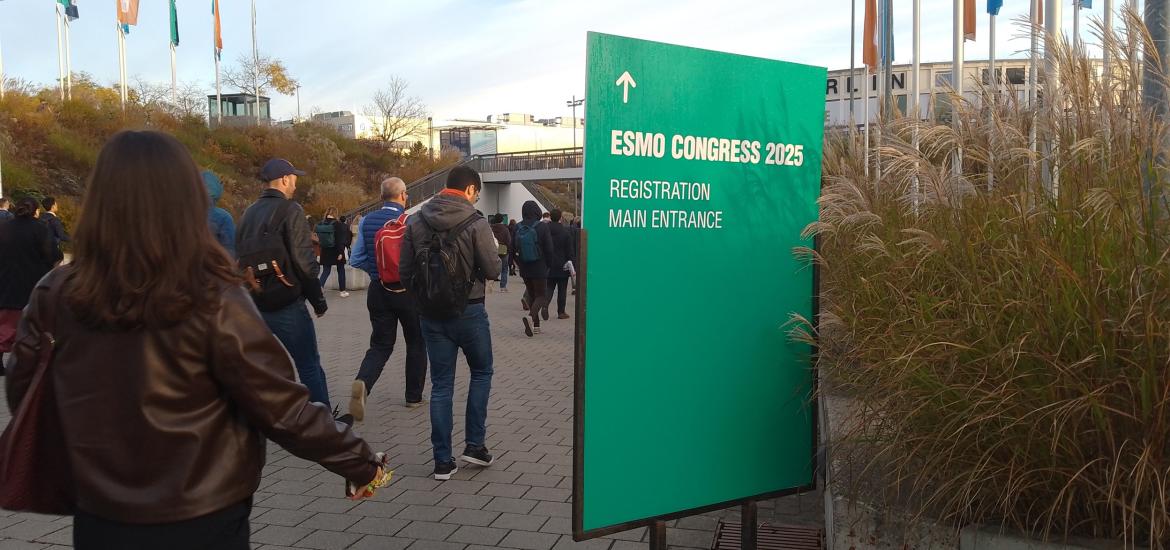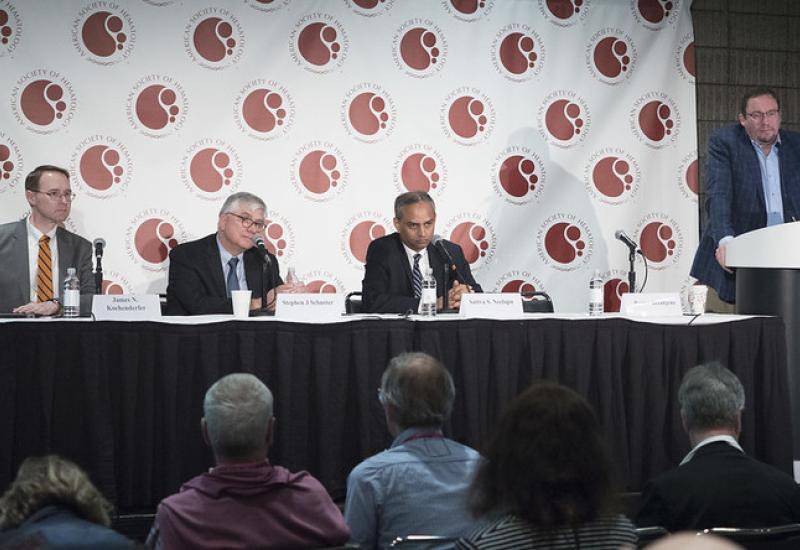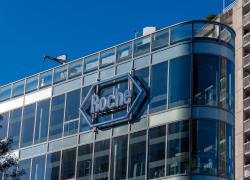
ESMO 2025 – little solace for Roche’s doomed TIGIT
A quartet of failed tiragolumab trials featured at ESMO over the weekend.
A quartet of failed tiragolumab trials featured at ESMO over the weekend.

Among the few positive takeaways from Roche’s ESMO postmortem of failed studies of the anti-TIGIT MAb tiragolumab are that the Skyscraper-07 trial might indicate a path forward for Tecentriq alone in oesophageal squamous cell cancer maintenance, and that Skyscraper-09, in head and neck cancer, wasn’t a total disaster.
These are small crumbs of comfort, however, from a pivotal misadventure that will have cost Roche many hundreds of millions of dollars to run, only to end in tiragolumab’s discontinuation in July. That said, Roche should be commended for presenting four of these key failed studies at ESMO, two as late-breakers, rather than quietly burying the data.
None of the ESMO presenters attempted to disguise these readouts as anything other than failures, meaning that their purpose is to guide future science and pivotal study decision-making, rather than indicating any future path forward for tiragolumab.
First the bad news
Perhaps the worst readout came first, on Friday from the three-cohort Skyscraper-07 trial in first-line maintenance in oesophageal squamous cell cancer, where versus placebo a tiragolumab plus Tecentriq doublet actually did numerically worse on PFS and OS than Tecentriq alone, while adding toxicity.
There was no benefit for the doublet against this study’s formal control of placebo either. It’s possible that the added tox resulted in tiragolumab patients dropping out, and thus hit the active cohort’s survival numbers, but the focus fell on the surprising promise of Skyscraper-07’s Tecentriq-only cohort.
This, investigators said, “demonstrated clinically meaningful improvements in PFS and OS”. It’s not clear whether Roche will now pick up the baton and test Tecentriq alone in oesophageal squamous cell cancer.
Tiragolumab studies featuring over the ESMO weekend
| Trial | Disease | Design | Primary endpoint | Comment |
|---|---|---|---|---|
| Skyscraper-07 | 1st-line maintenance in oesophageal squam cell cancer (not progressed after chemo) | Tecentriq + tiragolumab, vs placebo (also had Tecentriq monorx cohort) | mPFS 20.8mth vs 16.6mth (HR=0.82, p=0.947); mOS 38.6mth vs 36.4mth (HR=0.91, p=0.4772) | Tecentriq + tiragolumab numerically worse than Tecentriq alone; Tecentriq monorx had “a clinically meaningful improvement” vs placebo in PFS (29.1mth vs 16.6mth, HR=0.74) and OS (NE vs 36.4mth, HR=0.69) |
| Skyscraper-03 | 1st-line maintenance in stage III NSCLC (not progressed after definitive cCRT) | Tecentriq + tiragolumab, vs Imfinzi | mPFS in PD-L1≥1% 19.4mth vs 16.6mth (HR=0.96, p=0.7586) | Secondary endpoint, mOS in PD-L1≥1%, NE vs 54.8mth (HR=0.99) |
| Skyscraper-14/ Imbrave-152 | 1st-line liver cancer | Tecentriq + tiragolumab + Avastin, vs Tecentriq + Avastin | mPFS 8.3mth vs 8.2mth (HR=0.97, p=0.7464); OS HR=0.94 at 35% maturity | OS “not expected to reach statistical significance” |
| Skyscraper-09 | 1st-line PD-L1≥5% head & neck cancer | Tecentriq + tiragolumab, vs Tecentriq | ORR 21.3% vs 15.4% | mOS 16.2mth vs 13.6mth; post hoc PD-L1≥20% looked better, mOS 22.7mth vs 10.0mth; ph2 study not powered to test efficacy between cohorts |
Source: ESMO.
Next came a Saturday late-breaker on Skyscraper-03, in stage III NSCLC, where tiragolumab plus Tecentriq numerically beat Imfinzi on mPFS and mOS, but both sets of curves crossed over and there was absolutely no benefit across the entire study.
Sunday featured Imbrave-152, which until July represented tiragolumab’s last realistic chance of success. This compared tiragolumab plus Tecentriq and Avastin against Tecentriq/Avastin alone in first-line liver cancer, and had been started after the surprising success of the Morpheus-liver trial in 2023.
There was no repeat success in Imbrave-152, however, the PFS curves for the two cohorts lying virtually on top of each other. This trial hasn’t yet failed for OS, and while no OS curves were provided an immature OS hazard ratio of 0.94 was revealed, along with the statement that OS data are “not expected to reach statistical significance”.
Finally came a Sunday afternoon presentation on Skyscraper-09, which had a tiragolumab/Tecentriq cohort and a Tecentriq-alone arm, and concerned first-line PD-L1 ≥5% expressing head & neck cancer. This yielded numerical improvements in response rates and in OS, with a post hoc look at ≥20% PD-L1 expressers seeming especially promising, delivering median OS of 22.7 versus 10.0 months.
However, Skyscraper-09 was a small phase 2 study, which wasn’t designed to compare efficacy across its two cohorts, and it was discontinued in January. Tecentriq itself has already failed in head and neck cancer, flunking the adjuvant Imvoke-010 trial, and the real comparator is Keytruda, which is approved first line on the back of Keynote-048.
Against these setbacks the apparent success of Arcus/Gilead’s domvanalimab – though this came with significant caveats – was a more pleasant ESMO focus for anyone still hoping that the TIGIT mechanism might deliver something positive.
1561













